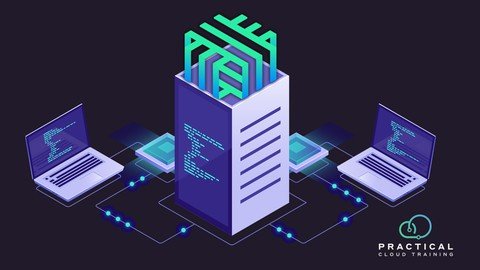
Published 1/2023
MP4 | Video: h264, 1280×720 | Audio: AAC, 44.1 KHz
Language: English | Size: 1.10 GB | Duration: 2h 30m
Master service mesh concepts and get hands-on experience with blue-green deploys, adding retries, visibility, and more
What you’ll learn
Learn why Linkerd is a great service mesh
Add your application to the Linkerd service mesh
Configure retries using Linkerd ServiceProfiles
Use Linkerd to conduct a blue-green deployment
Requirements
Basic Containerization and Kubernetes knowledge
Basic REST API knowledge
Minimum Recommended Hardware: 4 logical CPUs, 10GB RAM, 50GB storage
Description
This course has everything you need to take advantage of the powerful Linkerd service mesh. You will learn the core concepts needed to understand how Linkerd integrates with your application. Then, you’ll learn how and why to enable the advanced features of Linkerd. For each section, you’ll get hands-on exercises to reinforce your new skills.Learn the Service MeshLinkerd is a service mesh, which means that it allows you to manage and configure the network traffic in your application. Linkerd is a Cloud-Native tool that works inside a Kubernetes environment to create the service mesh.ObservabilityA major advantage of Linkerd is the observability feature. Linkerd provides the golden signals (success rate, latency, traffic) in a convenient dashboard or on the command line. In large microservices environments with lots of dependencies, it can be hard to find the root cause of errors in your service. Linkerd helps you to identify root cause by giving you success rates for all resources with linkerd enabled. Linkerd also allows you to configure traffic for the applications in your service mesh. You can add retries and timeouts using linkerd. These linkerd features allow you to increase the reliability of your system. If an incoming request results in an intermittent error, Linkerd’s retries can automatically retry the request so that your user just sees a successful response.Rust-based for speed and securityLinkerd’s sidecar proxy is written in the Rust programming language for a couple reasons. First, Rust makes Linkerd *fast*. Linkerd sidecar proxies are faster than other service meshes in the market. This means that Linkerd is cheaper to run and a better experience for your users than other meshes.Second, Rust makes Linkerd memory-efficient. When you are paying your cloud provider per GB of RAM used, it’s best to go with the most efficient service mesh.Third, Linkerd sidecar proxies are not vulnerable to C-style memory vulnerabilities due to the safety guarantees of Rust. This means fewer work injects to update the proxy due to memory security issues such as Heartbleed.Easy Deployment and UpdatesTo add Linkerd to your application, you add a single Kubernetes resource annotation. If Linkerd is running on your cluster, it will automatically add the required configuration data so that your application is enabled for linkerd. Linkerd runs as a sidecar along your application. That means that Linkerd works with any application programming language. The sideecar pattern also means that you can update linkerd without impacting your main application container processes. Advanced Deployment StrategiesLinkerd supports a Kubernetes Custom Resource Definition type called Traffic Splits that enables advanced functionality for distributing traffic to different backends. You can use it to implement canary deployments such as the Blue-Green deployment with Linkerd. You can also perform advanced techniques such as fault injection using the Linkerd TrafficSplit resource.
Overview
Section 1: Introduction
Lecture 1 Why Linkerd?
Lecture 2 Linkerd Performance
Lecture 3 Linkerd Architecture Overview
Lecture 4 Control Plane Components
Lecture 5 Course Contents
Section 2: Installation
Lecture 6 Installation Section Overview
Lecture 7 Install Guide
Lecture 8 Install Docker Desktop – macOS
Lecture 9 Install Docker Desktop – Windows Hyper-V
Lecture 10 Install Docker Desktop – Windows WSL
Lecture 11 Resource Recommendations
Lecture 12 Enable Kubernetes – All OS
Lecture 13 Install Linkerd – macOS
Lecture 14 Install Linkerd – Windows
Lecture 15 Install Viz – All OS
Lecture 16 Download Git Repository – All OS
Lecture 17 Load Haystack Image – All OS
Section 3: Meshing
Lecture 18 Meshing Section Overview
Lecture 19 Linkerd Sidecar Injection
Lecture 20 Linkerd’s AdmissionController
Lecture 21 Kubernetes Annotations
Lecture 22 Add Annotations with kubectl edit
Lecture 23 Add annotations with linkerd inject
Lecture 24 Lab: Meshing an application
Lecture 25 Lab Walkthrough: Meshing an application
Section 4: Visualization
Lecture 26 Visualization Section Overview
Lecture 27 Navigating the Viz dashboard
Lecture 28 Linkerd Viz Stat
Lecture 29 Linkerd Viz Edges
Lecture 30 Linkerd viz top
Lecture 31 Linkerd viz tap
Lecture 32 Lab: Finding Errors
Lecture 33 Lab walkthrough: Finding Errors
Section 5: ServiceProfile
Lecture 34 ServiceProfile Section Introduction
Lecture 35 ServiceProfile definitions
Lecture 36 Creating ServiceProfiles
Lecture 37 ServiceProfile templates
Lecture 38 linkerd profile –open-api
Lecture 39 linkerd viz profile –tap
Lecture 40 ServiceProfile Retries
Lecture 41 Applying ServiceProfiles
Lecture 42 Lab: Implementing Retries
Lecture 43 Lab Walkthrough: Retries
Section 6: TrafficSplit
Lecture 44 Section Introduction
Lecture 45 Blue-Green Overview
Lecture 46 TrafficSplit CRD
Lecture 47 Creating a TrafficSplit
Lecture 48 Implementing Blue Green Deployment
Lecture 49 Lab: Blue-Green Deploy 1
Lecture 50 Lab: Blue-Green Deploy 2
Lecture 51 Lab Walkthrough: Blue-Green Deploy
Software developers or maintainers who want to use Linkerd with their applications,Anyone who wants to get an understanding of how Linkerd works
Password/解压密码www.tbtos.com